I have tried several different antennas for the 40 meter amateur band,
usually with less-than-optimum results. Some day, I would really like to have a rotary 40 meter yagi, but that project remains a dream for the future. After trying different dipoles, wire arrays, and verticals, I have found that loading the boom of my high tribander gives me by far the best bang for the buck.
For the cost of a feedline and a few capacitors, I have a rotatable
dipole at 100' which performs quite well.
Matching the boom of a large tribander for 40 meters was not my idea.
I got the idea from AA4NU, who got it from N4KG. Tom's description
of the theory can be found at the following link:
http://lists.contesting.com/archives//html/Towertalk/2002-03/msg00731.html
My first attempt used capacitors which were too small. The enclosure
was also not suited to the task. Large air variable capacitors are used for
for ease of tuning. The enclosure and mounting mechanism has been improved over a few iterations. The latest design has been up for over 5 years. The bandwidth is about 110 kHz. This is more than enough to cover the 40 meter CW band.
Note that this technique can only be used for antennas which have
their end elements grounded to the boom. Force 12 and Skyhawk
antennas will probably not work, unless the outer-most elements are electrically connected to the boom.
Following are a few pictures of an omega match for a Mosley PRO-57A antenna.
Give this a try. I think you'll be impressed with the results!
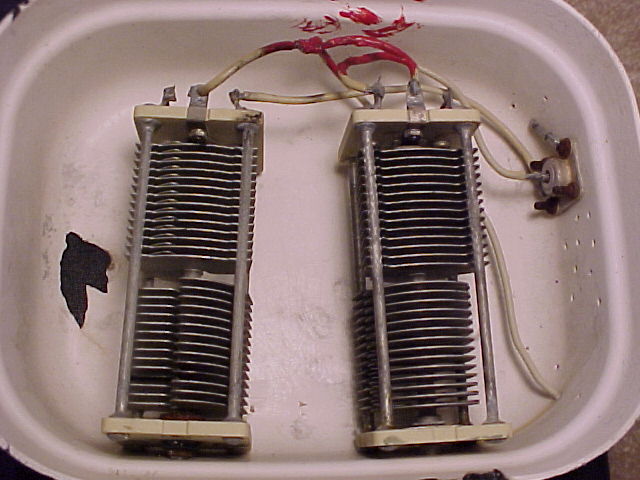
The old unit was poorly designed, and became corroded and
weather-beaten quickly. The spacing of these capacitors was
too small for operating at the 1 kW power level.
The enclosure lost its lid after 6 months from UV rays.
The mounting screw broke a hole in the left side of the enclosure
after it also became brittle from UV and WX.
This old unit has seen better days...
This newer unit has significantly larger capacitors.
A closeup of one of the capacitors fully meshed.
The insulated knobs prevent hand capacitance and RF shocks while tuning on the tower.
The enclosure is a children's lunch box made by Aladin. It lasted about 4 years before UV disintegrated it. My latest design uses an outdoor-rated gasketed electrical box with weep holes at the bottom. The box is mounted to the mast using a spare Mosley boom-to-mast clamp which was left over from an earlier project.
Here is the ATU mounted to the mast.
The finished product, flying high.


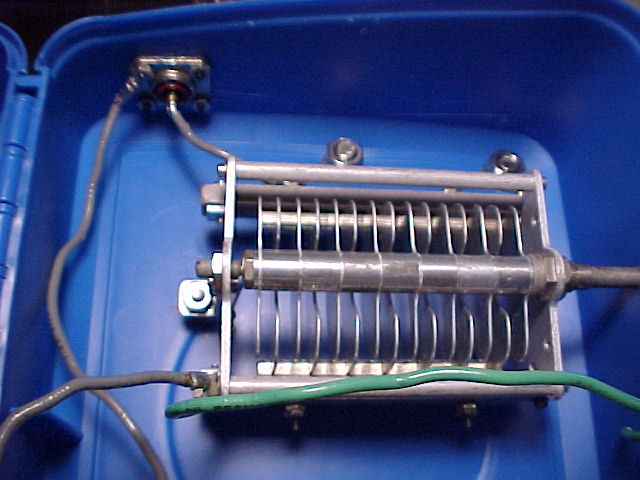
I've been collecting these at hamfests for the last few years.
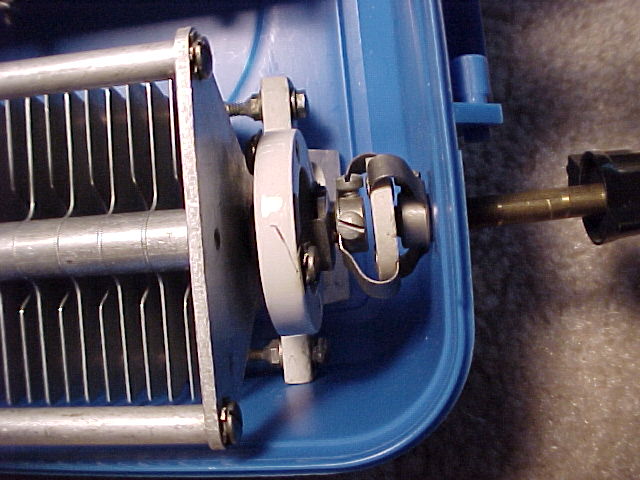
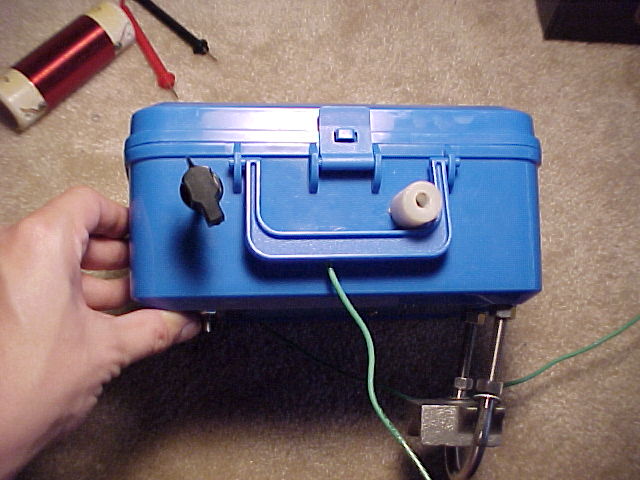
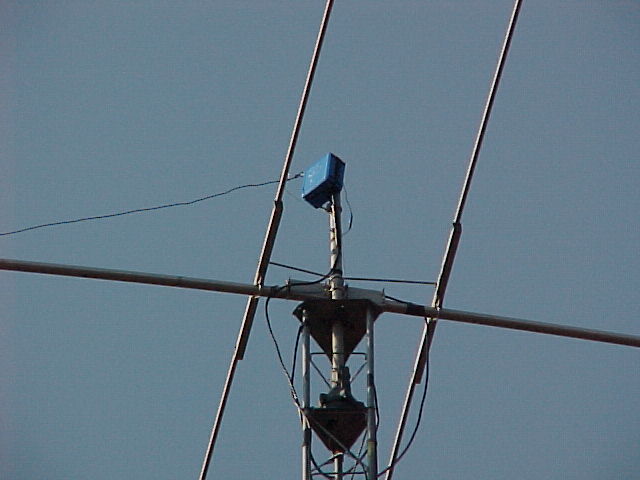
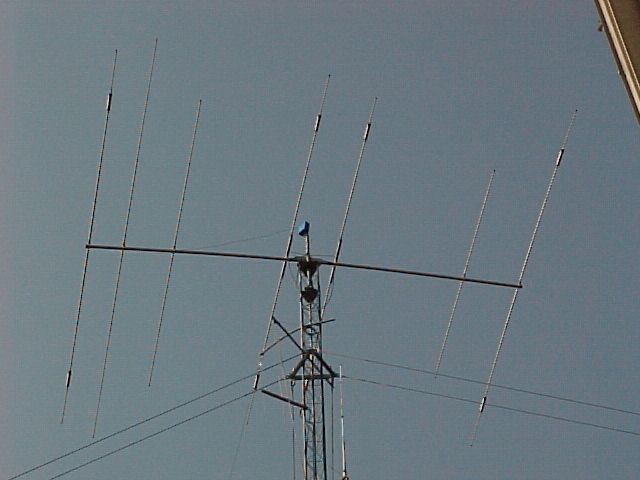
This is just one way to tune up your boom on 40 meters. I like the
ease of tuning and flexibility afforded by using air variable capcitors. The boom can be tuned for 30 or 40 meters, and can accomodate any possible future band allocations. You can also make fixed capacitors out of coax, as N4KG recommends.
Tune your boom! I think you'll like the results.
A big thanks to N4KG for the concept, and to AA4NU for telling me about it.